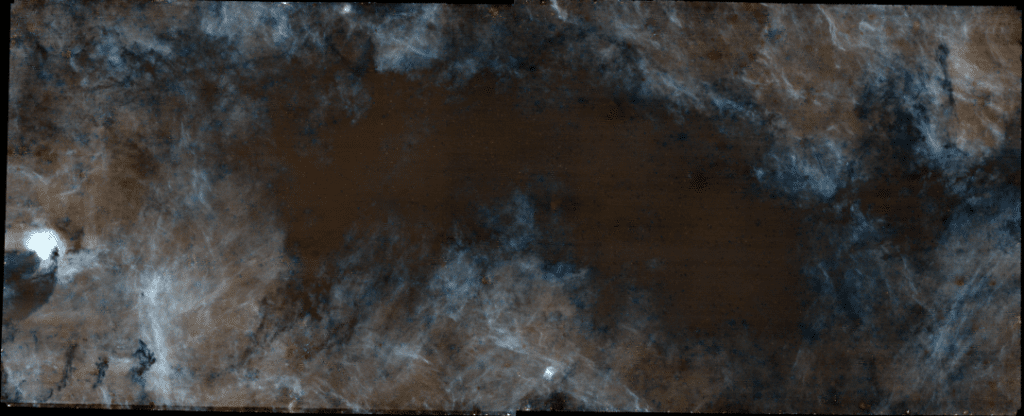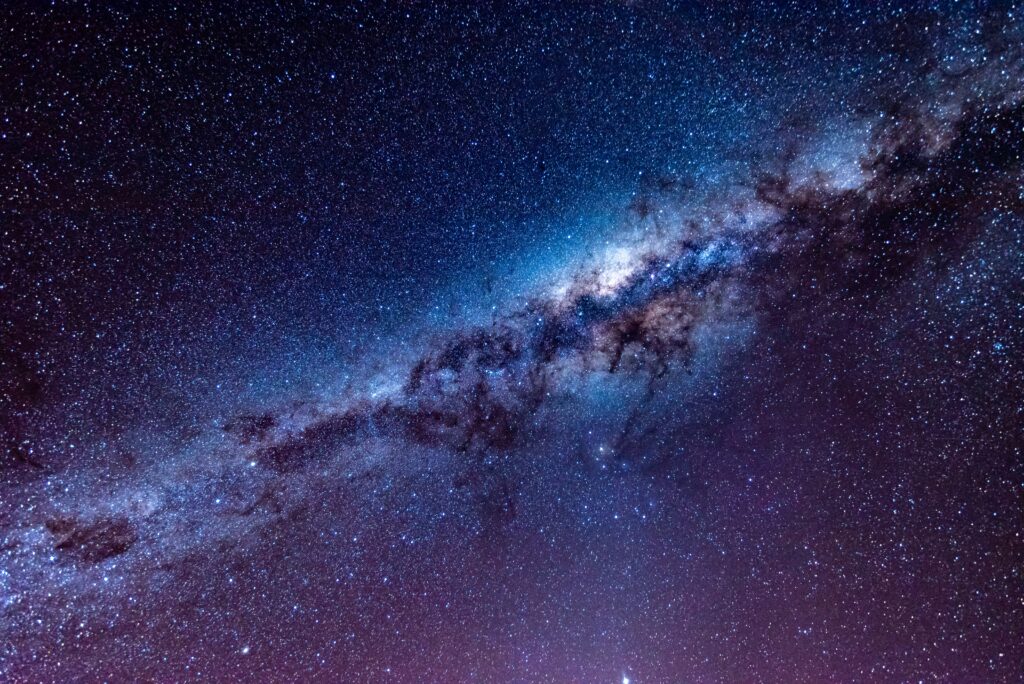In the heart of the Milky Way, a shadowy region has long captivated astronomers: a dense, dark gas cloud known as “The Brick.” This enigmatic phenomenon defied expectations with its stubborn refusal to birth new stars. Enter University of Florida’s Adam Ginsburg and his team of intrepid astronomers. Armed with the mighty James Webb Space Telescope (JWST), they embarked on an astronomical odyssey to unveil the secrets of this cosmic conundrum.
The team, including UF graduate students Desmond Jeff, Savannah Gramze, and Alyssa Bulatek, reveals startling discoveries that challenge our long-standing theories about star formation. Their work is published in The Astrophysical Journal.
The Paradox of The Brick
Despite being a dense gas cloud, which typically signifies a breeding ground for new stars, The Brick has an unexpectedly low star formation rate. This contradiction to expected astronomical behavior has puzzled scientists for decades.
Utilizing the Webb Telescope’s advanced infrared technology, the research team made a significant finding: The Brick contains a substantial amount of frozen carbon monoxide (CO) ice. “Our observations compellingly demonstrate that ice is very prevalent there, to the point that every observation in the future must take it into account,” Ginsburg explains in a statement.
This discovery has profound implications, as CO ice is a key component in star formation processes.
Contrary to what one might expect, the presence of abundant CO ice did not correlate with a high rate of star formation. The team found that the gas within The Brick is warmer than in similar clouds, suggesting a complex and unexpected relationship between CO ice and star formation.
These observations compel a reevaluation of the abundance of CO in the Milky Way’s center and the critical gas-to-dust ratio in these regions. Both measures, according to the team’s findings, are lower than previously thought. This challenges the existing understanding of molecular distribution in the center of our galaxy.

A New Perspective From The Webb Telescope
The Webb Telescope has enabled astronomers to view molecules in the solid phase (ice), a perspective previously limited to gas form. “This new view gives us a more complete look at where molecules exist and how they are transported,” Ginsburg states. This shift in methodology provided insights into the distribution of CO ice, using intense backlighting from stars and hot gas to illuminate the cloud.
The study also offers a deeper understanding of the origins of molecules in our Solar System. The ice discovered in The Brick could be similar to that which formed planets and comets in our own solar system.
Ginsburg and his team are only at the beginning of their exploration. They plan to conduct a more extensive survey of celestial ices using spectroscopy, a technique that will help them measure and understand the progression of chemistry over time in these clouds.
The findings open new doors in our quest to understand the universe. As Ginsburg notes, “With the advent of the JWST and its advanced filters, we are presented with our most promising opportunity yet to expand our cosmic exploration.” His study not only illuminates the peculiar nature of The Brick but also paves the way for future discoveries that could reshape our comprehension of the cosmos.
The UF team offers a visualization tool that shows The Brick in the broader context of the Galaxy and compares the new JWST data to the previous best, the Spitzer Space Telescope by clicking here.












